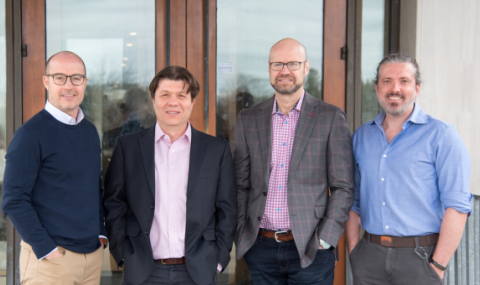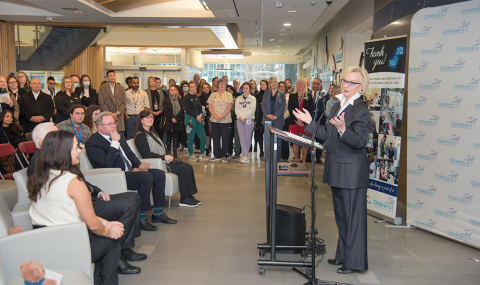CSTAR is introducing a new project called Bringing Education & Technology To You (BETTY). We are implementing a mobile in- situ simulation education program for teaching hands-on skills and interprofessional team training for health professionals. This program is aligned with identified patient safety care challenges. A multidisciplinary approach will be used to include Nurses, PSW’s, IENs, Externs, Residents/Fellows, Physicians, Students and Health Disciplines.
Our Current Education Plans:
Through various reporting mechanisms, participant evaluations and surveys, 5 specific needs have been identified as areas of focus and improvements. Our current needs are as follows;
Urinary Catheterization
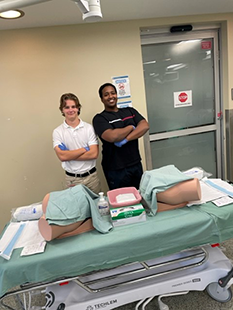
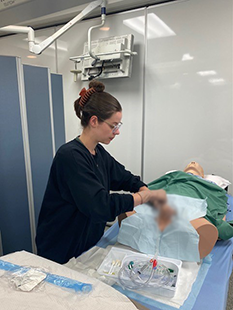
Identifying clinical indications for placement of urinary foley catheter. Review patient identification, consent and College of Nurses (CNO) scope of practice for performing a controlled act, and education needs. Participants perform risk assessment, PPE requirements and hand hygiene throughout the procedure, peri-care, insertion of foley (traditional vs. sure-step products). Observe for aseptic technique. Discuss CAUTI bundle principles. Review documentation and reassessment standards of practice, urine specimen collection steps, and proper removal of urinary foley catheter and disposal of biomedical waste.
Vascular Access
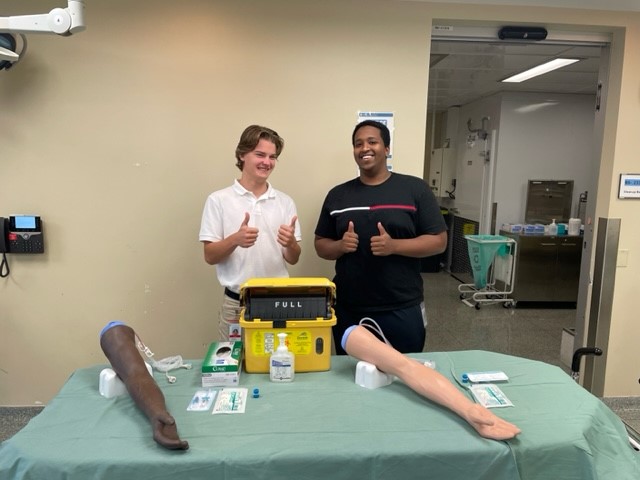
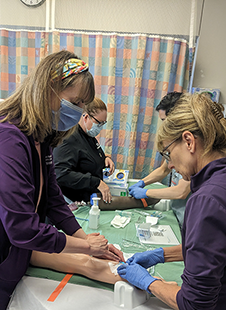 | 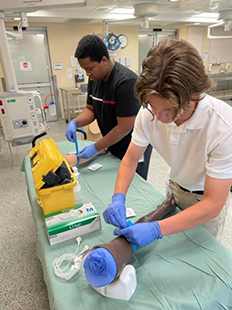 | 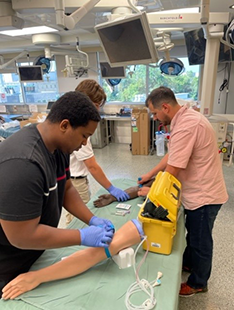 |
Venipuncture:
Using our arm task trainer models to identify clinical indications for venipuncture, review of patient identification, consent, scope of practice and education needs. Participants perform tourniquet application, vein assessments, identifying sit selection for blood specimen collection, personal risk assessment, BD Eclipse UltraTouch insertions as described by insertion guide, and proper handling of sharps and disposable biomedical waste.
Peripheral Intravenous Insertion:
Using our arm task trainer models to identify clinical indications for placement of a PIV and the gauge size. Review of patient identification, consent, scope of practice and education needs. Participants perform tourniquet application and interventions for vein distention, vein assessment, sit selection for PIC placement and personal risk assessment, Nexia PIV insertion as described by insertion guide including dry time and PPE and proper handling of sharps and disposable biomedical waste.
Code Blue


Code Cart Review:
Reviewing donning of Protected PPE and reviewing personal risk assessments, hand hygiene and PPE requirements throughout the procedure. Identify and locate the unit code cart. Review of the different components and drawers of the cart, Zoll features, drug box with practice on opening medications and documentation (goal for nurses and regulated staff only). Getting ready for the code team arrival (have crash cart available, Zoll in room, defib pads in place and Zoll turned to defib, initiation and performance of good quality compressions – CPR challenge with feedback with our resuscitation model.
Code Blue Simulation:
Using our resuscitation model to recognize the patient is pulseless and identifying resuscitation status. Demonstrate calling for help (e.g., calling for assistance from other staff members and having switchboard called and providing proper information). Donning of protected PPE, perform risk assessment, review personal protection requirement and hand hygiene through the procedure, initiation and performance of good quality compressions and preparing for the code team arrival.
Deteriorating Patient
Various deteriorating patient scenarios (e.g., sepsis, airway management) put into a simulation with a multidisciplinary approach. The scenarios will be shared with the department leader/ educators to help determine the best education plan for their specified units. Every simulation includes and pre-brief and a de-brief for review of scenario and different ways of improvement or changes that might be seen in a patient’s response to treatment depending on actions taken by team.
Safe Patient Handling (Musculoskeletal/ Lifts and Transfer)
Review patient identification, consent and safe handling procedures. Identify key areas within the electronic health record for communication/mobility information. Perform pre-transfer and lift assessment prior to mobilization/transfer of the patient, transfer from bed to chair using proper body mechanics. Review patient education needs and PPE requirements and hand hygiene throughout the procedure. Cleaning procedure of lift equipment as per standard wiping protocol and documentation and reassessment standards of practice.
Booking with BETTY:
BETTY will bring education to your unit! We do include inpatient, outpatient and Offsite locations through the organization.
If you are interested in booking a session with us, please fill out the below survey and we will contact you in a timely manner.
You can also reach out to the project at bettyproject@lhsc.on.ca for more information and booking requests. Please include your unit or area, education of interest, and preferred days of the week or times that would best fit your unit/area needs.
What We Bring:
Our task trainers/resuscitation models and supplies for participant use. Our educator will come with a simulation technician to help facilitate the sessions.
What We Require:
A small space to set up our stations (e.g., patient assessment room, bay, classroom or conference room) and a stretcher for our models to be placed on. If a Manager, Educator or Charge Nurse is available to help encourage staff the day we attend the unit into the session it would be much appreciated!
Staff are typically in training for 15 minutes – 1 hour depending on the subject of focus. We understand that patient volumes are high and the needs of the department come first. If the participants need to step out of training back to their assignments at any given time, we completely understand!
